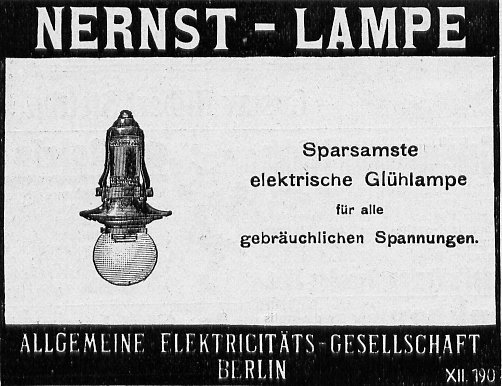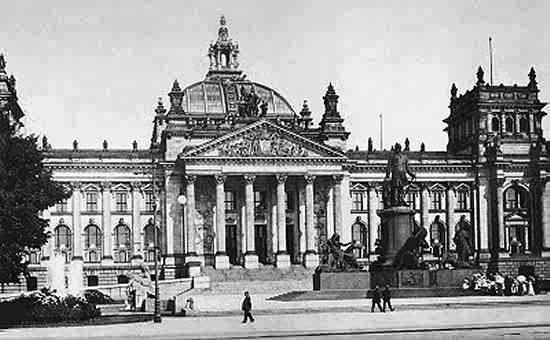You are using an out of date browser. It may not display this or other websites correctly.
You should upgrade or use an alternative browser.
You should upgrade or use an alternative browser.
Iron and Blood - Game Thread
- Thread starter Tee Kay
- Start date
The Kingdom of Swaziland and the other nations of The Accord would like a formal statement from the UNA regarding their position to California's actions in Hawaii.
Tecknojock
Keeping the world running
California may have been to harsh initially we will accept mediation with our previous plan as a backup one. If this is fails to be resolved within 4 years (before the update) we will return to our old one. Martial law will still be in effect until this is resolved.
California will not, however, accept Hawaiian independence, even as a vassalage.
California will not, however, accept Hawaiian independence, even as a vassalage.
Tecknojock
Keeping the world running
7AM is what I meant if I didn't put that.
A German Renaissance?

The political violence which marred the years after the Revolution seems to have calmed down, and though tension still lingers, the Popular Front coalition government can now finally focus on the dismal state of the German economy. Despite a promising start in the early years of the German Empire, Germany has been lagging behind the rest of the world for decades. Now, the Germans are determined to catch up.
However, a few months into 1898, came the Dreyfus Affair, which culminated in the French declaration of war against Germany. German citizens of all political allegiances rallied behind August Bebel’s coalition government to stand up defiantly to France. For a few weeks, German troops gathered along the border with France, ready to defend their country against overwhelming odds should any French soldier violate German soil.

German troops in trenches along the French border
In the end, the situation was successfully defused diplomatically, and Germany emerged with its honor intact and more united than ever. The government’s popularity skyrocketed. Bebel used the opportunity to pass significant land, labour and social reforms, including a comprehensive welfare program and national health insurance bill, which would otherwise have been struck down by an implacable opposition.

Reichskanzler and leader of the SPD August Bebel
Bebel’s government also announced an ambitious program of industrial expansion, dubbed the “German Renaissance” program, with the aim of eventually making Germany a world economic power. Key industries and utilities were wholly or partially nationalised. Recognizing the importance of fast and reliable transport in economic development, a national railway, Deutsche Reichsbahn, was created, and a rapid railway expansion program is underway. The KÖNIGSBERG-STUTTGART and HAMBURG-INNSBRUCK lines opened in late 1899 with much fanfare. An expansion of telegraph and the creation of a telephone system are also in the works. New universities and technical colleges are being established to train more skilled workers. Germany is also investing heavily in research, particularly in the chemical and electrical fields.

Railcar outside Köln (Cologne), in the Ruhr
The German land is rich in natural resources; iron in Sweden, coal in the Ruhr and Silesia. The state and private companies are helping to develop these resources. The fast-growing industrial city of COLOGNE in the Ruhr is the largest city in Germany. New port facilities are being built in OSLO, BERGEN, STAVANGER, GÖTEBERG, HELSINKI and TRIESTE.

New facilities in Helsinki (Helsingfors)
Germany is quick to adopt new technologies from abroad, and electricity generation in particular is receiving a lot of attention. A number of entrepreneurs and engineers in the Ruhr saw the potential of electricity, and founded the Deutsche Elektrizitätswerk, which built Germany’s first power plant near MÜNSTER in 1891. Since then, Germany has embraced electrification with fervor. Electricity revolutionized industrial production as well as everyday life; gas street lighting in major cities such as STOCKHOLM, COPENHAGEN, VIENNA, BUDAPEST, PRAGUE, LEIPZIG and MUNICH have been replaced by electric lighting. More and more factories, theaters, offices and even homes are using electric lights, improving working and living conditions and greatly lowering fire hazard.

Advertisement for Nernst light bulb in Die Woche magazine
The War Scare impressed on the German leadership of the need for overseas allies. Joining the Accord was politically unacceptable, so Germany joined the UNA. As Germany embarks on its industrialization program, the government and private companies send people overseas to other UNA countries to study new industrial technologies and techniques.
The German Reich will celebrate the new century with an international fair in BERLIN. The city saw a small construction boom in the lead up to the fair. Architect Paul Wallot designed a new parliament building for the country in the heart of the city. The new Reichstag will be finished in time for the fair.

The Reichstag
Germany still faces political troubles. The National Front opposition continues to protest against some of the more radical reforms of the Government, while within the Government the rift between the SPD and the KPD is becoming more apparent, with the KPD accusing the SPD of “selling out” the working class in their drive for rapid industrialization; indeed, although labor reforms were passed by Bebel’s government on paper, implementation has in fact been patchy. To fund the ambitious industrialization program, cuts were made to the welfare system, on which the SPD was attacked by both its allies in the Popular Front and the National Front opposition. Recently ethnic conflict has been in the news, with riots between Hungarians, Saxons and Romanians in KARLSBURG (ALBA IULIA) and anti-Semitic disturbances in LEMBERG (LVOV). The fear is that if it seems that large-scale political or ethnic turmoil returns, the military would not hesitate to launch a coup d’etat and impose a dictatorship.
============================
The German Republic
IC - 88
20 IC to build 10 factories in Central Europe
20 IC to build 10 factories in Scandinavia
40 IC to build 20 factories in Germany
8 IC into Science
Joins the UNA
I think I've named all the cities
Please change the flag to the republican black-red-gold tricolour


Orders: 152 IC
-The Olympic Games - 10 IC
-Factories - 142 IC - 71 Factories
-10 Factories in each of these provinces: Sindh, Punjab, Tibet, Sinkiang, Mongolia, Peking, Manchuria
-1 Factory in Sichuan
-Nominate Sichuan to be Core
Kan' Sharuminar
Fluffy
I should get another RP post out in the next 24 hours, but in case I don't here's the general orders. Note the supplies Kiwitt. Supplies  *
*
Imperial Russia
107 IC
20 IC into 10 factories in Russia
60 IC into 30 factories, spread equally across Idel-Ural, Siberia and Kazakhstan
20 IC into supplies
4 IC to build 2 new armies
3 IC into science
'Operation Mercury' launched.
*I'll let that go now
P.S.
 *
*Imperial Russia
107 IC
20 IC into 10 factories in Russia
60 IC into 30 factories, spread equally across Idel-Ural, Siberia and Kazakhstan
20 IC into supplies
4 IC to build 2 new armies
3 IC into science
'Operation Mercury' launched.
*I'll let that go now
P.S.
Spoiler :
Don't forget I ordered supplies
SouthernKing
crickety cricket
After the next update, I will retake contol of the Aussies.
Kan' Sharuminar
Fluffy
Yakutsk would like to request the formal names of every nation, accompanied by their flag, as part of a stricter geography curiculum and the drawing up of a few new cartographic works.
Might be better as a thread in the discussion board

hoplitejoe
Top fun-poster
- Joined
- Mar 22, 2010
- Messages
- 5,470
Australian orders
16 IC into factories in Australia
96 IC into factories in New Zealand
Request New Zealand becomes a core
Don't worry, these are the last from me
16 IC into factories in Australia
96 IC into factories in New Zealand
Request New Zealand becomes a core
Don't worry, these are the last from me

kiwitt
Modern Earth Modder
GM: Orders close in 17 hours - Good Luck
mechaerik
Tuturuu!
CALIPHATE OF MEDINA
ORDERS
90IC- All to factories.
25 factories (50IC) in SYRIA
10 factories (20IC) in EGYPT
5 factories (10IC) in IRAQ
5 factories (10IC) in ARABIA
ORDERS
90IC- All to factories.
25 factories (50IC) in SYRIA
10 factories (20IC) in EGYPT
5 factories (10IC) in IRAQ
5 factories (10IC) in ARABIA
So apparently I didn't submit any orders yet. Derp
Siam
195 IC
35IC - science
10IC - 5 factories in Taiwan
20IC - 10 factories in the Philippines
50IC - 25 factories in Malaya
30IC - 15 factories in Bombay
30IC - 15 factories in Burma
20IC - 10 factories in Siam
Siam
195 IC
35IC - science
10IC - 5 factories in Taiwan
20IC - 10 factories in the Philippines
50IC - 25 factories in Malaya
30IC - 15 factories in Bombay
30IC - 15 factories in Burma
20IC - 10 factories in Siam
FRANCE

French Marshall Ferdinand Foch

French Marshall Ferdinand Foch
During the Franco-German War, Ferdinand Foch remained one of the few French Generals to be innocent from the expansive Dreyfus affair. Eventually, he was appointed to the position of Marshall, commander of all military forces. He managed to hold this position even after the war ended. Although he did not order an attack, as the state of the government meant that one could barely be organized, he was ordered by the ruling Counsel to defend the eastern border. Given his orders, he organized a system called guerre de tranchées.
Trench warfare was a revolutionary way to fight battles. Instead of two armies facing off, they would dig defensive trenches and create fortifications, making an attack require great skill and precision. Soon, Germany also picked up on these ideas. Not totally aware of the strife going on in France, the expected an attack to come at any time. Naturally, small skirmishes between patrols occurred, and soon the German army learned of the French fortifications. They built their own.
After the war ended, President Fallieres instructed Foch to integrate the system into standard French doctrines. The marshal soon got to work on it, and within a few years, trench warfare shall be the common doctrine of the French army, and likely the German army as well.
Trench warfare, or Grabenkrieg, in fact developed independently, if not earlier, in Germany. As the defending country and vastly outgunned by the French, the Germans urgently needed effective defensive positions which could be built in a short time. Trenches was the solution adopted by the German Army, and extensive trench defenses were soon created along the western and southern borders with France.
The German Army claimed that it was French troops, the aggressors in the war, who first stumbled across the German fortifications along the border, and copied them, and not the other way around as the French claimed. Both Foch and the Germans may have developed their respective trench systems independently at the same time, and copied each others' ideas.
The German Army claimed that it was French troops, the aggressors in the war, who first stumbled across the German fortifications along the border, and copied them, and not the other way around as the French claimed. Both Foch and the Germans may have developed their respective trench systems independently at the same time, and copied each others' ideas.
hoplitejoe
Top fun-poster
- Joined
- Mar 22, 2010
- Messages
- 5,470
Orders edited
Similar threads
- Replies
- 44
- Views
- 7K
- Replies
- 24
- Views
- 4K
- Replies
- 95
- Views
- 26K

